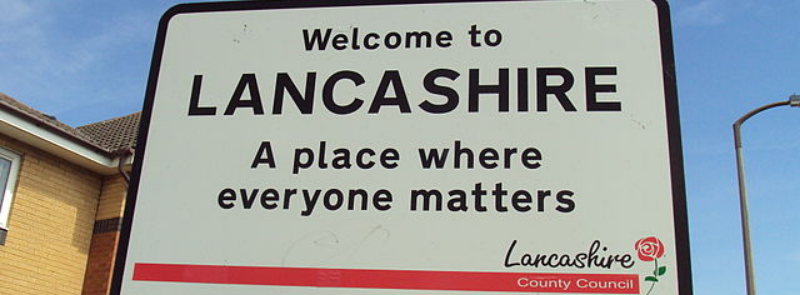
When It Occurs
Every November 27th
Official Website
Timeline
Days Passed (686)
# Hashtags
#LancashireDay #LegacyOfLancashire
Lancashire Day is an annual celebration observed in Lancashire, UK, on November 27. The origins of this celebration date back centuries, as early as 1295, making it a deeply rooted tradition. This event garners widespread attention, with residents actively participating and even drawing the interest of the British royal family. Across the historic county of Lancashire, the day is marked by town criers proclaiming the Lancashire Day proclamation.
Key Information about Lancashire Day:
1. Historical Background:
- Date of Significance: Lancashire Day is celebrated on November 27th to mark the date in 1295 when Lancashire sent its first representatives to Parliament. This was the year King Edward I summoned two representatives, or MPs, from Lancashire to attend what became known as the Model Parliament in Westminster, the first Parliament to include representatives from the counties.
- The day has since been designated as Lancashire Day to commemorate the historic importance of the county and its early role in England’s political landscape.
2. Purpose and Significance:
- Lancashire Day aims to celebrate the unique identity, culture, and traditions of Lancashire, a county in the northwest of England known for its rich industrial history, particularly during the Industrial Revolution, when it was at the center of textile manufacturing, especially cotton.
- It fosters a sense of pride among Lancastrians (the people of Lancashire) and serves as a day for locals to reflect on the history of their county and its impact on the broader UK.
3. Traditions and Celebrations:
- Proclamation: One of the central events of Lancashire Day is the reading of the Lancashire Day Proclamation. This proclamation is read out in various towns and cities across Lancashire by town criers. The traditional proclamation announces the importance of the day and invites Lancastrians to celebrate their heritage.
- Dialect and Language: As part of the celebration, locals often celebrate the unique Lancashire dialect. Various events and gatherings may feature poetry, songs, and readings in the dialect, honoring the county’s linguistic heritage.
- Local Events: Towns and cities throughout the county host events such as parades, historical reenactments, fairs, and community gatherings. Many museums and heritage sites hold special exhibitions or tours related to Lancashire’s history.
- Food and Drink: A key part of Lancashire Day is celebrating the county’s traditional foods. Typical Lancashire dishes such as Lancashire hotpot, Eccles cakes, and butter pies are enjoyed in homes and restaurants. Pubs and restaurants often put on special menus showcasing local produce.
- Music and Dance: Traditional folk music and Morris dancing are sometimes featured as part of the celebrations, reflecting the rich cultural heritage of Lancashire.
4. Lancashire’s Cultural Heritage:
- Industrial Revolution: Lancashire played a pivotal role during the Industrial Revolution, particularly in the cotton industry. The county was known for its textile mills, which produced the majority of the world's cotton goods in the 19th century. Towns such as Manchester, Blackburn, and Preston were major industrial hubs.
- Lancashire Hotpot: The Lancashire hotpot is a signature dish of the region, traditionally made with lamb or mutton, onions, and potatoes, slowly cooked to create a comforting and hearty meal. It is often enjoyed on Lancashire Day.
- Sports: Lancashire is also known for its sports culture, particularly Lancashire County Cricket Club, which is one of the oldest and most prestigious cricket clubs in England. Football clubs like Manchester United, Liverpool, and Blackburn Rovers also have strong roots in the Lancashire area.
5. Modern Lancashire:
- Although modern administrative boundaries have altered the size of historic Lancashire, with parts of the county becoming Greater Manchester, Merseyside, and Cumbria, the identity of Lancashire remains strong. The celebrations on Lancashire Day emphasize the county’s historical boundaries and promote unity among all Lancastrians, regardless of these modern changes.
- Lancashire is now a diverse county with a mix of urban and rural areas. Cities like Preston, Blackpool, and Lancaster are key parts of modern Lancashire, while the county retains beautiful natural landscapes such as the Forest of Bowland and the Lancashire coastline.
6. Symbols of Lancashire:
- Red Rose of Lancaster: The Red Rose is the symbol of Lancashire, historically associated with the House of Lancaster, one of the factions involved in the Wars of the Roses. The red rose is proudly displayed throughout the county, and many people wear it on Lancashire Day.
- Lancashire Flag: The Lancashire flag, featuring the red rose on a yellow background, is flown during Lancashire Day celebrations. People are encouraged to display the flag at their homes, businesses, and public buildings to show their pride in the county.
7. Lancashire Day Proclamation (Traditional Text):
- The proclamation is traditionally read out by a town crier and includes the following key text:
- “To the people of the city and county palatine of Lancaster. Greetings! Know ye that this day, November 27th in the year of our Lord two thousand and twenty-three, the 72nd year of the reign of Her Majesty Queen Elizabeth II, Duke of Lancaster, is hereby proclaimed Lancashire Day. Know ye also, and rejoice, that by the royal charter granted in the 51st year of the reign of Her Majesty Queen Victoria, Lancaster is, and forever shall be, a county palatine with its own court, the Duchy chamber, and a head of state – the Duke of Lancaster.”
- This proclamation reflects the historic status of Lancashire as a county palatine, meaning it had special privileges under royal authority, with the reigning monarch being the Duke of Lancaster.
8. How to Celebrate Lancashire Day:
- Learn about Lancashire History: On Lancashire Day, locals and visitors alike are encouraged to learn more about the county’s rich history, including its role in the Industrial Revolution and its cultural contributions.
- Support Local Businesses: Many people use Lancashire Day as an opportunity to support local Lancashire businesses by shopping at local markets, buying Lancashire-made goods, and eating at local restaurants that serve traditional dishes.
- Community Events: Attend one of the many community events, from traditional performances to historical tours, that take place across the county. These events help strengthen the sense of community and pride among Lancastrians.
Conclusion:
Lancashire Day is a celebration of the county’s rich heritage, traditions, and community spirit. It highlights Lancashire’s significant role in English history, from its political contributions to its industrial prowess. Observed with a mix of pride, cultural events, and traditional foods, it serves as a day for the people of Lancashire to come together and celebrate their shared identity. Whether through the reading of the proclamation, enjoying a Lancashire hotpot, or displaying the red rose, the day is a proud reminder of Lancashire’s lasting legacy in the UK.


